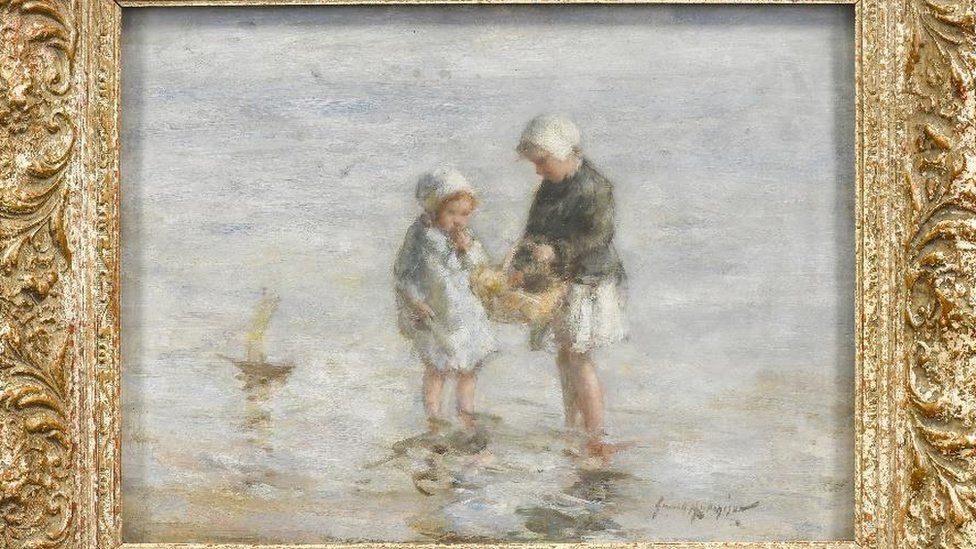-

-
-
Loading

Loading

Over 30 years ago, a painting was stolen during a museum heist at the Haggs Castle Museum of Childhood in Glasgow. The thieves disabled the alarm system and broke into the museum through a window, taking several valuable items, including pieces on loan from the renowned Burrell Collection. None of the stolen items were seen again until recently. The painting, titled "Children Wading" and created by Robert Gemmell Hutchison in 1918, was discovered after being listed on the Art Loss Register (ALR), the world's largest private database of stolen art and collectables. The ALR, utilized by museums, auction houses, law firms, insurers, and the police, contains approximately 700,000 registered items, including 65,000 currently missing from museums worldwide. James Ratcliffe, the ALR's director of recoveries, expects a significant increase in missing museum items to be added to the database as UK museums audit their collections due to the recent revelation that 2,000 items from the British Museum are missing, stolen, or damaged. Some of the British Museum's unaccounted art has already been identified and registered with the ALR. Wales' National Museum also reported around 2,000 missing items. The painting "Children Wading" had been unknowingly owned by a family who put it up for auction as part of their late father's estate. Fortunately, the ALR recognized it as stolen, prompting Tennants Auctioneers to withdraw it from sale. The family agreed that the painting should be returned to Glasgow Museums, as it had been gifted to the museum in 1960. Duncan Dornan, the museum's director, expressed delight at having the artwork back, despite the long duration of its theft. Artworks stolen often resurface after several decades, as most buyers hold onto their purchases for personal enjoyment. Rosie Adcock from law firm Boodle Hatfield mentioned that the Art Loss Register worked well in this case, and the family voluntarily decided to return the artwork. Legally, if an artwork is purchased in good faith, without knowledge of its theft, and more than six years have passed, the purchaser becomes the legal owner. However, the original owner can still pursue the thief for compensation. Dornan is hopeful that other missing items from the museum may also be recovered. He emphasized the satisfaction of seeing wrongful takings returned to the collection, making the artwork available for public enjoyment and highlighting the effectiveness of systems within the art sector.